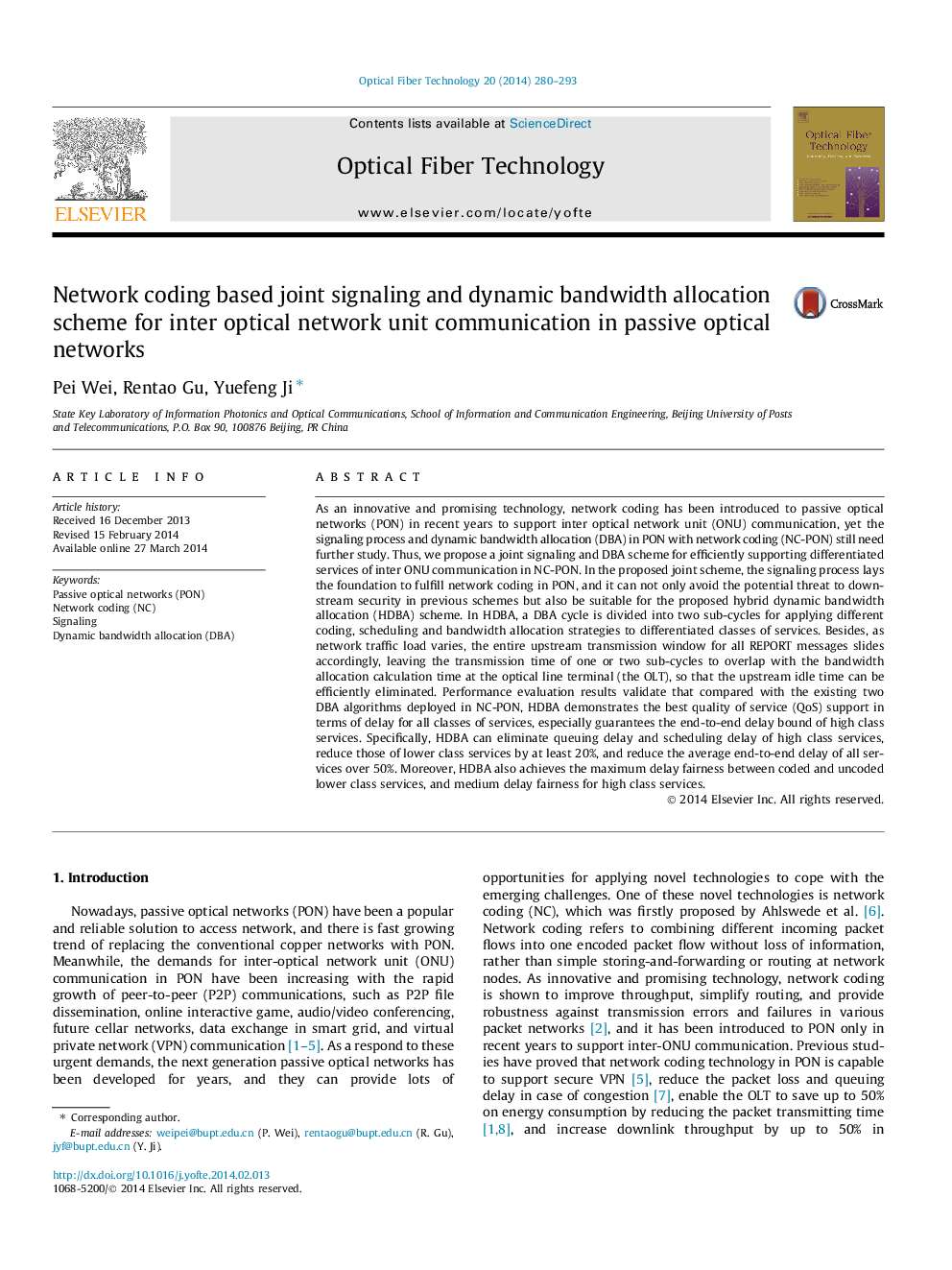| Article ID | Journal | Published Year | Pages | File Type |
|---|---|---|---|---|
| 464164 | Optical Fiber Technology | 2014 | 14 Pages |
•A joint signaling and DBA scheme is proposed in PON with network coding.•The proposed signaling scheme can avoid potential threat to downstream security.•“Two sub-cycles division” scheme applies different coding and bandwidth allocation strategies to different services.•“Slidable REPORT window” scheme is proposed for complete idle time elimination.•QoS for all classes of services in PON with network coding is improved.
As an innovative and promising technology, network coding has been introduced to passive optical networks (PON) in recent years to support inter optical network unit (ONU) communication, yet the signaling process and dynamic bandwidth allocation (DBA) in PON with network coding (NC-PON) still need further study. Thus, we propose a joint signaling and DBA scheme for efficiently supporting differentiated services of inter ONU communication in NC-PON. In the proposed joint scheme, the signaling process lays the foundation to fulfill network coding in PON, and it can not only avoid the potential threat to downstream security in previous schemes but also be suitable for the proposed hybrid dynamic bandwidth allocation (HDBA) scheme. In HDBA, a DBA cycle is divided into two sub-cycles for applying different coding, scheduling and bandwidth allocation strategies to differentiated classes of services. Besides, as network traffic load varies, the entire upstream transmission window for all REPORT messages slides accordingly, leaving the transmission time of one or two sub-cycles to overlap with the bandwidth allocation calculation time at the optical line terminal (the OLT), so that the upstream idle time can be efficiently eliminated. Performance evaluation results validate that compared with the existing two DBA algorithms deployed in NC-PON, HDBA demonstrates the best quality of service (QoS) support in terms of delay for all classes of services, especially guarantees the end-to-end delay bound of high class services. Specifically, HDBA can eliminate queuing delay and scheduling delay of high class services, reduce those of lower class services by at least 20%, and reduce the average end-to-end delay of all services over 50%. Moreover, HDBA also achieves the maximum delay fairness between coded and uncoded lower class services, and medium delay fairness for high class services.
